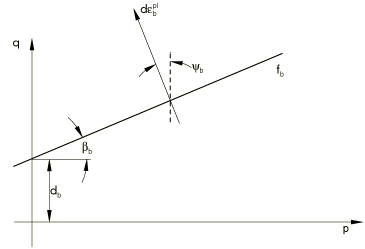When all joints at a point are closed, the elastic behavior of the material is assumed to be isotropic and linear. The material cannot be elastically incompressible (Poisson's ratio must be less than 0.5).
We use a stress-based joint opening criterion whereas joint closing is monitored based on strain. Joint system a opens when the estimated pressure stress across the joint (normal to the joint surface) is no longer positive:
In this case the material is assumed to have no elastic stiffness with respect to direct strain across the joint system. Open joints, thus, create anisotropic elastic response at a point. The joint system remains open as long as
where is the component of direct elastic strain across the joint and is the component of direct elastic strain across the joint calculated in plane stress as
where E is the Young's modulus of the material, is the Poisson's ratio, and
are the direct stresses in the plane of the joint.
The shear response of open joints is governed by the shear retention parameter, , which represents the fraction of the elastic shear modulus retained when the joints are open (=0 means no shear stiffness associated with open joints, while =1 corresponds to elastic shear stiffness in open joints; any value between these two extremes can be used).

